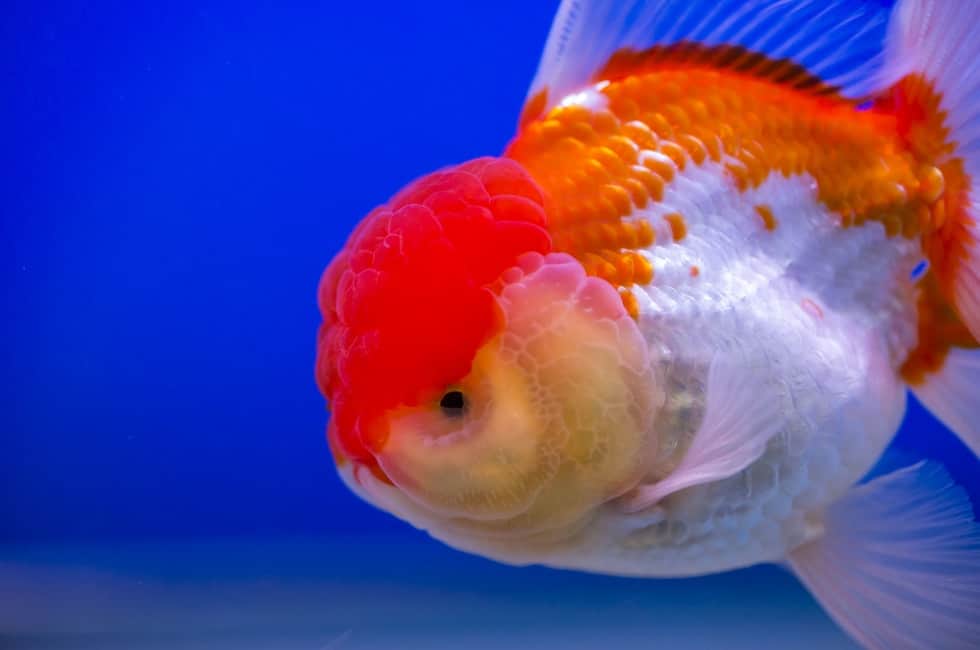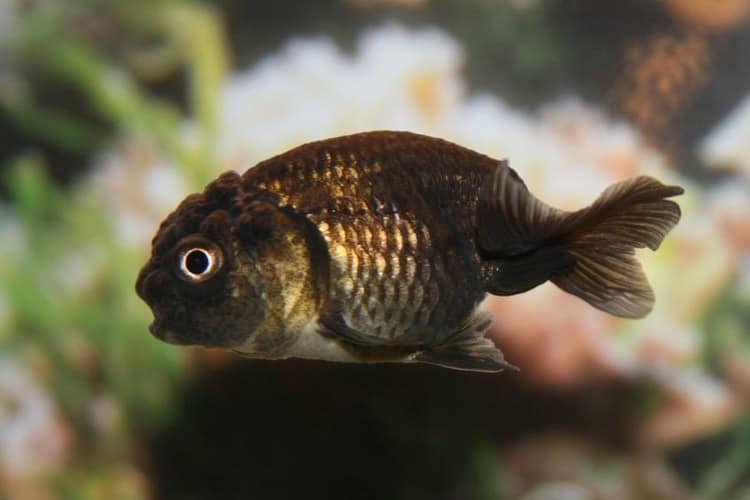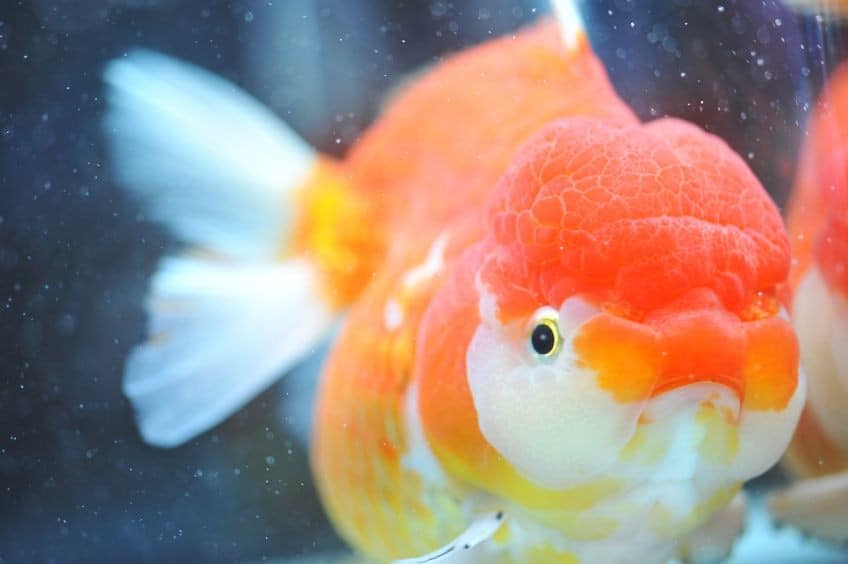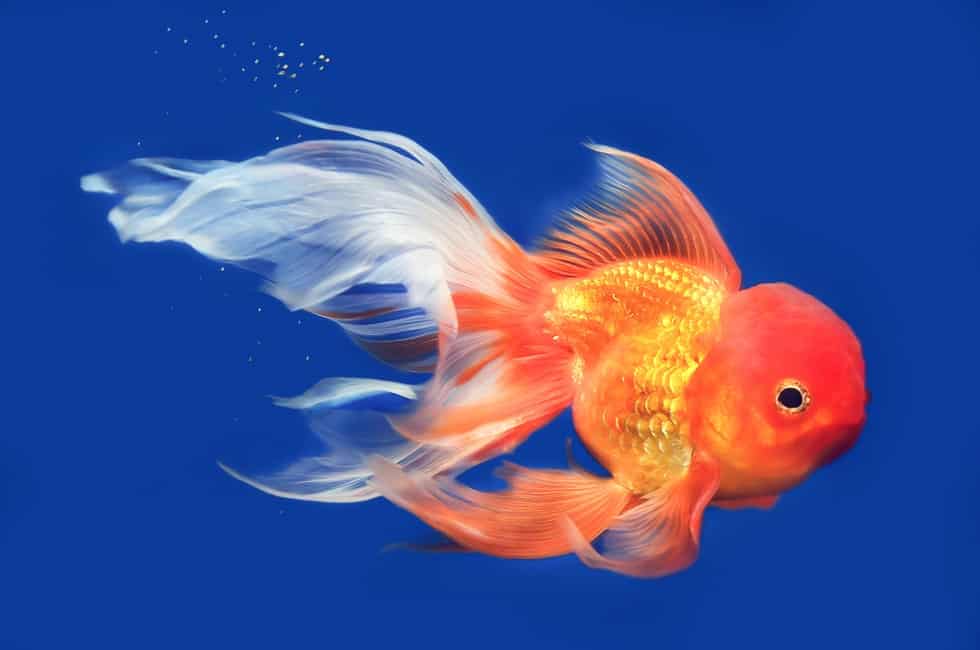The Goldfish Oranda or lion head fish has become one of the most popular goldfish in the world, because of the size that can reach the cap of the head of the fish.
The cap is one of the weakest points of the fish and requires care, as it could attract diseases.
It could also harm the Oranda goldfish, the cap can grow to cover your eyes and affect your vision and even blind them.
Characteristics of Lionhead Goldfish
It belongs to the family of goldfish, the difference between the Oranda and the common goldfish is the hood that has over his head. The cap takes about 1 or 2 years to develop.
Habitat
Where does the lionhead fish live? It is the origin of the Asian continent in the waters of China. Although when it was first imported from China to Japan. They thought he was from the Netherlands and they called him a Dutch iron mask.
Colors
These fish have many colors although the color that predominates in them is orange. We can see goldfish oranda black, silver, white, yellow, etc.
Behavior
They are very peaceful fish with which we can relate them to fish of the same behavior. They tend to be on the surface almost always, although they often come down from time to time to the bottom to eat leftovers.
Sex difference
There are many ways to differentiate the sex of the fish, in this case, the goldfish oranda fish. One of the details we have to look for is when they reach maturity, the males will get small white spots on the pectoral fins and on the gills.
Another difference in some fish is the size and colors. Normally the males are smaller than the females and have colors more striking and brighter than the females.
In the courtship time, it is the male who chases the female. There are many details in which we can set ourselves to differentiate the sexuality of the male and female lionfish.
Size
The Oranda goldfish can grow 20 to 31 centimeters, depending on the feed, temperature and aquarium care. Here we will explain all the care of the lion head fish or oranda goldfish.
Lifespan
They can live between 5 and 10 years as long as they meet the conditions they need in the matter of temperature, oxygen, and food.
Goldfish oranda Care
When buying a goldish oranda we have to know the fundamental care that these fish should have, in the theme of the aquarium, decoration, and food.
The aquarium should be largely about 100 liters per fish, the goldfish need space in their aquarium so try to avoid many decorations (statues, trunks, and rocks).
Japanese Lionhead Goldfish
Avoid especially the pointy decorations, since you could damage the hood you have, you must remember that they are slow-moving fish and the hood will remove visibility.
Another of the fundamental care for this kind of cold water fish is the cleaning of the aquarium. The aquarium must be clean and in perfect condition since it could cause many diseases.
Keep your aquarium clean for goldfish
Here we explain step by step how to clean an aquarium and that it stays totally clean for your fish, removing all the bacteria and any type of risk for them.
Some types of fish need more care than others for the diseases they can attract and to avoid that, we have to clean the aquarium at least once a week.
The ideal aquarium for a Japanese lion head fish would be a very large aquarium with great freedom of movement. In the theme of the decorations, we can put some natural plants, since they are omnivorous fish and could resort to them when they need it.
In the decorations for the bottom of the aquarium since we are going to put natural plants, the best option is to put substrate. We can also add some rocks for your shelter.
The oxygenation must be quite good, the lionfish has a big head and that will create difficulty when it comes to oxygen. This is solved with a progressive water change and a good filtration.
Ideal Aquarium temperature
The temperature of the aquarium must be between 15º and 22º C, with a pH of 7º to 7,5º C.
Avoid leaving the aquarium in a place where for the day these many hours giving the sun.
With what fish can the lionhead be related?
The oranda goldfish need to be in groups of their own species, so if you have an aquarium and you are thinking of buying lions head, buy 5 to 6.
To relate them to other fish species will not have any problems since they are peaceful fish and will avoid all kinds of conflicts. With the only fish that he would not recommend to relate them, it would be with the golden barbs or Chinese neons.
These are very active fish and can steal the food to goldfish oranda, apart from that when they feel threatened they could bite their fins.
Reproduction
When we achieve reproduction in our aquarium, it means that we are doing things very well. To achieve that we have to have our lionfish goldfish well fed, providing all the nutrients.
Also the temperature of the water in good condition, those parts should be fundamental if we want our lion head couple. Once they are in conditions these factors can reproduce.
The male will chase and try to take the female by beating them in the belly to the place where the courtship will take place. Once there, the mating will begin where the male will fecundate the female.
We must remove the adult goldfish so that they do not eat the eggs, after about 36 hours the eggs will hatch and they will feed on their yolk sac,
In 2 or 3 days we can feed the fry with commercial food.
Most Common Diseases Lion Head Goldfish
There are several diseases of goldfish, many of you may wonder why the lionfish is at the bottom of the aquarium without moving or face up.
Well when you see that, it’s because your fish is sick. One of the most common diseases of these fish is the swim bladder.
Swimming bladder
This disease is caused by the abuse of food that we are giving. Goldfish need to do good digestion because they love to eat and could be eating for a long time.
That is why it is recommended to give them small amounts and in some foods to soak the feed in water so that it can digest it better.
Tuberculosis
We will realize because our fish begins to swim very slowly, almost without strength to swim to the surface of the aquarium. It could be due to lack of oxygen, so it would be advisable to separate the fish in an individual fish tank and change the water every few minutes.
Freshwater plague
Many diseases are generated by the care of the aquarium, these fish need a change of water weekly. The first symptoms of this disease will be spots that will come out through the body, and their colors will be more muted.
Finnedness of fins
The fish will swim with only one fin that can be affected by several reasons, a poor diet or some mishap that has been with the statues or decorations of the aquariums.
Can Lionhead goldfish live in ponds?
No pond seems complete without some brightly colored fish in it that you can watch quietly on a warm summer evening. Goldfish are therefore favorite fish for the pond. However, not all types of goldfish are suitable for the pond and not all ponds are suitable for goldfish.
The attitude in the garden pond
If goldfish live in a garden pond, a few requirements should be observed. So goldfish love to “bask” on the floor of the garden pond. That is, a natural soil with sand and/or soil is important for the animals.
Basically, a garden pond should not be exposed to intense sunlight, at least one-third of the water surface must be shady. Otherwise the growth of algae and the water temperature increase, both are unfavorable for goldfish.
Although goldfish love temperatures between 4 and 30 they feel particularly comfortable at around 20 The deeper a garden pond is, the more likely it is that fish can stay in their preferred “feel-good zone”; in general, temperatures are more constant at higher water depths.
Both for shading and for retreat, the garden pond should contain as a home for goldfish aquatic plants. Flat-lying leaves such. B. of water lilies give the water shade and the goldfish the opportunity to hide. A natural soil provides the opportunity to give in to the innate urge to look for food.
Depending on the size of the garden pond, a different number of goldfish can be used. However, one should remember that goldfish but like to multiply and very numerous. So a couple can quickly become a large family with more than 10 animals.
This is what they do best when they feel really comfortable in their pond. It also depends on what kind of goldfish is used in the pond, as belonging to the family of goldfish several variants. They vary in size and therefore require the appropriate space in the pond.
But both the space conditions should be considered, as well as the fact that parent goldfish eat their brood sometimes. If the garden pond is around 1.50 deep and thus frost-free even in winter, the goldfish can survive.
For safety, however, a measure should be taken that does not completely freeze the water surface of the garden pond. This can be achieved, for example, with a polystyrene plate placed on the water surface or with special plastic balls.
Lion head feeding
It is one of the fish that most care is needed when feeding. Here we explain the way in which you must feed your lion’s head.
What do lion head goldfish eat?
They are omnivorous fish, that is, they eat any type of food, vegetable, live food, and commercial food.
We have explained the care of the decorations, the cleanliness of the water and of course, we also have to be careful with the food.
How should we feed the lion head fish?
To feed these fish should be a varied and balanced diet, we can give live food such as adult artemisia, California worm, blood worms, daphnia, mosquito larvae, fruit flies, tubifex, crab, shrimp, and oyster.
Plant food, try to give cooked peas or some similar vegetables. You can also give him a cucumber, lettuce, spinach.
The commercial food or dry food you can find in any store fish, before adding grains or feed balls, we soak them in water a few minutes.
The lionfish usually suffers a lot from swim bladder and we could have a serious problem.
Tips for a good diet
They say that one day a week it is advisable not to give them anything to eat so that they do their digestion well and have no problems with the swim bladder disease.
At the time of throwing the food, we can do it 2 or 3 times a day in small quantities. Although it seems that Japanese goldfish are always hungry, do not worry, they will always find some piece of seaweed in the aquarium to feed themselves.
LIONHEAD VS RANCHU
Origin:
Its origin is controversial since this Carassius has a very complex evolutionary history. However, it seems that the progenitor, the Maruko, is originally from China, but its classification took place later on in Japan.
Derivations:
According to the scholar Matsui (1981) the Maruko, an egg-shaped fish without a dorsal fin, derives from Wakin.
Characteristics:
In the Rancho, the body is egg-shaped, with a pointed snout and without the Wen, the fleshy growths on the head typical of the Lion-head instead. There are three main species that are thought to derive directly from the Maruko:
According to Matsui, the Maruko was the “prototype” first imported into Japan and derived from him the Rancho of Osaka and the Nankin.
The Lion-head, instead, when it arrived in Japan following the great success received across the border, had already been selected in China. Both countries continued at the same time in the breeding of the Lionhead, creating two similar but distinct strains. Today this differentiation remains summarized in two different definitions:
The Lion-head China, with a gently arched back and a slightly bent tail down;
The Lion-head Japan, with a more arched back, a deeper body and a shorter tail from the base bent downwards but from the lobes instead turned upward, to form an angle.
There are other relatively new species of Ranchu with Wen, but being the Lion-head a quality considered very valuable, all subsequent crosses with other breeds are not held in high regard by purists.
Variations:
Although the Metallic chromatic scale has always been privileged in Japan, the Nacreous coloring called Endonishiki in Ranchu with little or without Wen has much sought after.
In recent years the new chromatic ranges of Blue, Black and Chocolate have been included in the farms, which will soon (as soon as the genetic characters are fixed) give rise to new varieties of Ranchu and Lion-head.
The Wen: for Rancho, we mean a fish of identical shape to the Leon-head but without Wen or with just mentioned Wen.
The form: For Ranchu we mean exclusively the Japanese Lion-head.





Gale
Tuesday 14th of July 2020
My daughter has a lionhead goldfish. She has had it for about 5 years. We think it might be sick, it has white spots on its head and lays still alot. We have called every vet in our area and none can help they do not have experience with fish. We do not know what to do for the fish to help him. We looked up care for him and seen your blog. Maybe you could help by telling us what else we could do.